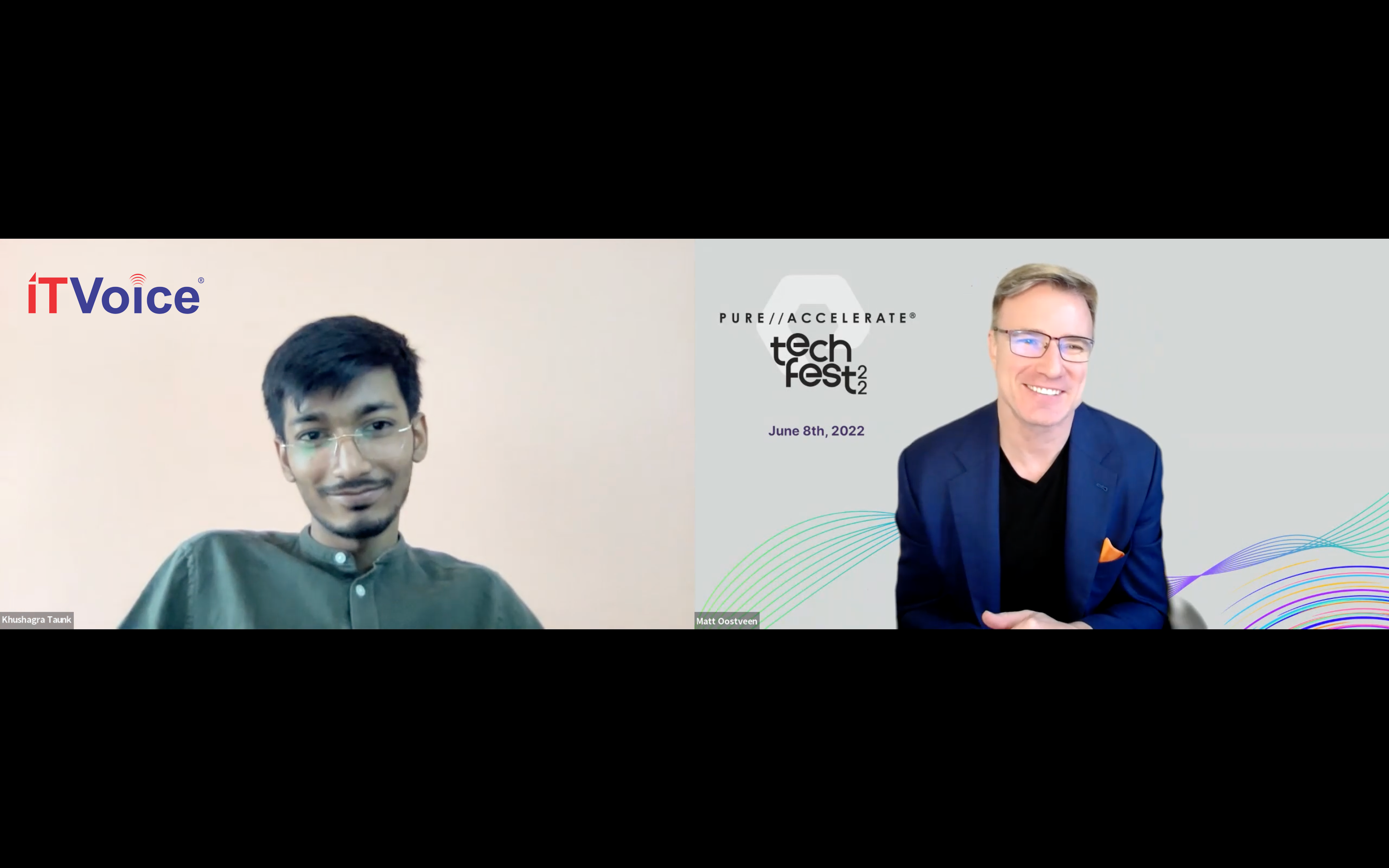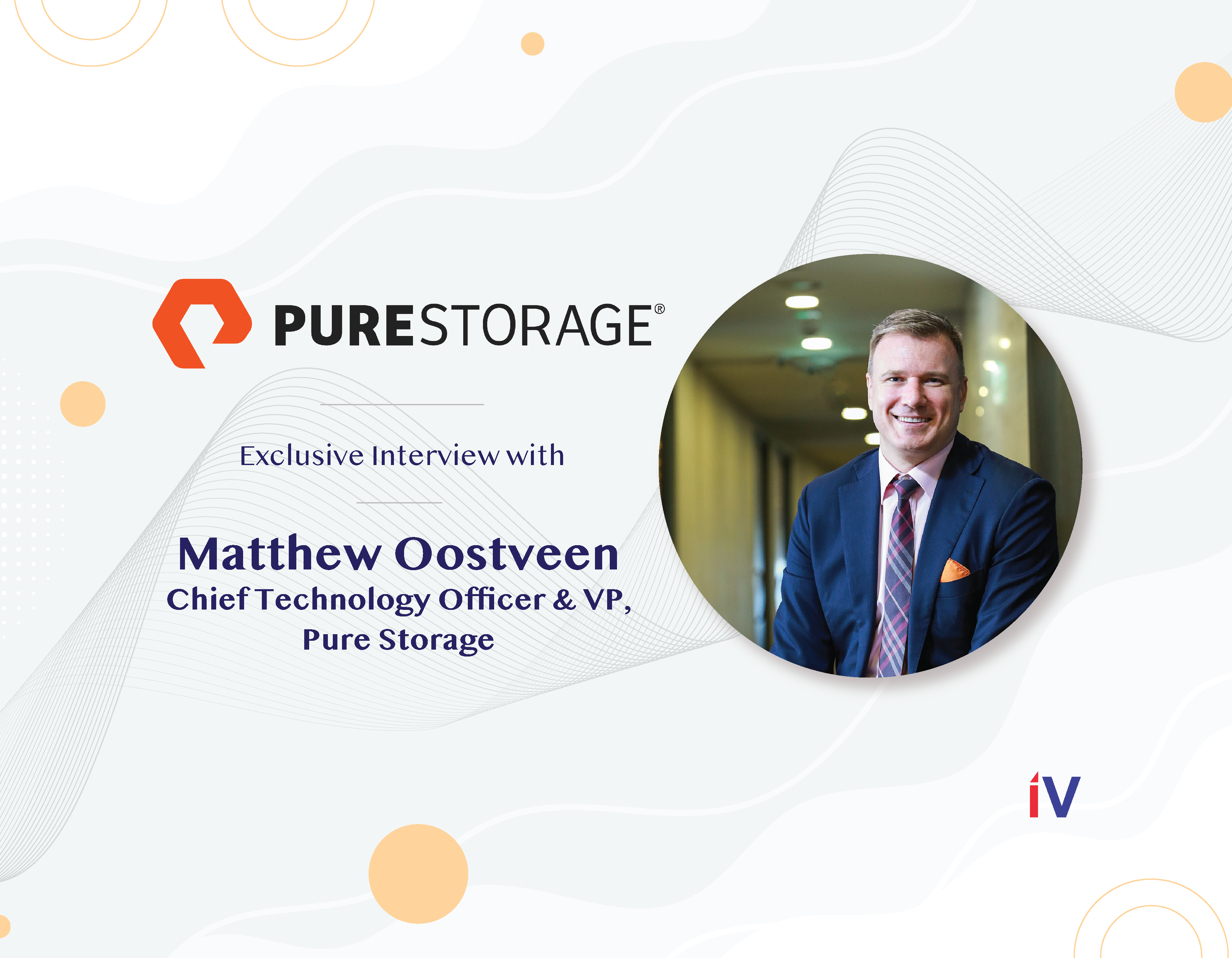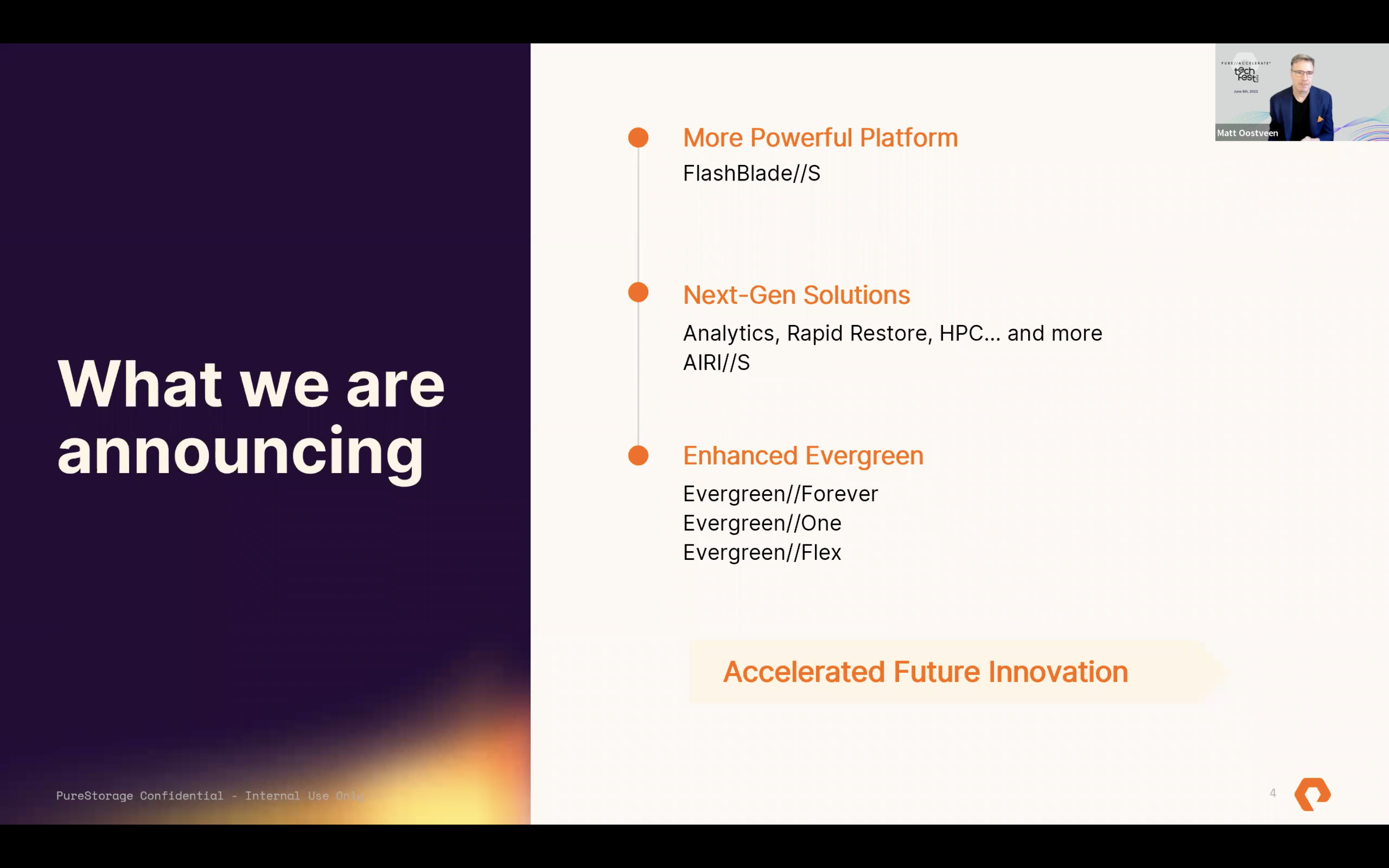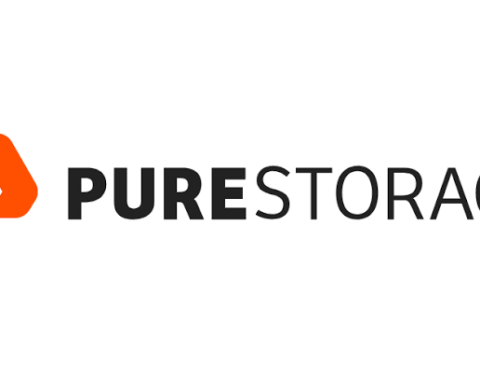On the surface, Pure Storage looks like a hardware company, but it really is a software company at heart, says Matthew Oostveen, the company’s Vice President, and Chief Technology Officer for Asia Pacific & Japan. While the company sells storage in hardware form, it’s really the software that is the secret sauce. This approach has helped Pure Storage to disrupt an industry long dominated by legacy players such as Dell-EMC, NetApp and HPE.
The company’s software approach helped it to become one of the first companies to make flash viable for mission-critical enterprise applications 13 years ago. Now this approach is helping it achieve its ambition to simplify enterprise environments while making data management seamless across on-premises and multi-cloud environments. On the sidelines of three key announcements that the company made at its recent end-user event, Pure//Accelerate TechFest 22, Oostveen sits down with IT Voice (Khushagra Taunk) to provide more insight into how these announcements will help organizations navigate the challenges of unstructured data and complex IT environments.

Khushagra: The FlashBlade//S is capable of handling tremendous amounts of workload, with double the density, double the performance, and double the power efficiency, what are the environmental implications due to this, and what steps Pure Storage is taking to achieve carbon neutrality?
Oostveen: The most common strategy for cutting energy use is to focus on just the hardware and to make it as efficient as possible. But our experience has shown that it takes a lot more than just the hardware. The use of flash on its own is inherently more energy efficient, as well as real estate friendly, than legacy storage technologies such as mechanical disk. That was our starting point and we have demonstrated over the years tremendous energy reduction and space savings. Over an eight-year period, we estimated that our customers had saved 4 billion kWh. To put that in greenhouse gas emission terms, that is equivalent to 7 billion miles driven by a single car. Pure’s flash systems also take up 96% less space than legacy spinning disk systems. That is equivalent to eliminating 19,000 data center racks.
So that was the first step. I mentioned our software philosophy earlier. Well, our operating system, Purity, has approximately 25% fewer lines of code than our competitors. Our software was optimized for flash whereas our competitors attempt to use legacy code to try to make them work with flash.
Our products are also so simple to use that the instruction manual fits on two sides of a business card. So tremendous benefit to the environment by eradicating encyclopedia level user manuals.
So, we are in a great position to help our customers meet their sustainability goals. Beyond that, Pure ourselves have committed to several goals to reduce our own carbon footprint. In our inaugural ESG (Environmental, Social and Governance) Report, we committed to making progress against Scope 1, 2, and 3 emissions focused both on company operations and the use phase of Pure products:
- 50% intensity reduction in market-based Scope 1 and 2 greenhouse gas (GHG) emissions per employee from FY20 to FY30
- Achieve net zero market-based Scope 1 and 2 emissions by FY40
- 66% intensity reduction in use of sold products from Scope 3 emissions per effective petabyte shipped from FY20 to FY30
Khushagra: About the AIRI//S, Artificial Intelligence has come a long in automating human tasks. How far along have we reached in terms of its usage in the data storage industry? What does the future look like?
Oostveen: We think it is just the beginning, Pure has an advantage beyond just the AIRI//S and the FlashBlade//S which was designed for advanced applications such as AI and machine learning which process a lot of unstructured data. Pure 1, our cloud-based management platform for example, uses AI to “predict” the best ways for our customers to optimize their storage arrays and potential problems and fix them before they occur. At a global level, Pure1 processes over 180,000 discrete workloads a day and the AI engine takes all this data and knows how every workload and application needs to be run effectively to meet service level agreements.
This takes a lot of troubleshooting burden off our customers’ IT teams, and they can focus on more strategic projects.
We are taking the same level of automation and orchestration to cloud-native modern apps and containers.
Khushagra: With the help of automation and AI, are we ever going to fully eliminate a task of a data analyst or in the rarest scenario of a data scientist?
Oostveen: We won’t do away with the job of a data scientist because we still require a certain level of creativity and critical thinking to come up with different questions and ways to answer them. Products like AIRI//S does not replace the data scientist, it merely frees up their time to focus on how AI can solve real-world problems.
Khushagra: Could you explain the need for categorizing Evergreen into three different product models?
Oostveen: We need to understand that different companies are on different journeys, and they are in various states of maturity. Working with the number of improvements they may get, is the first step in understanding the purpose of having these various models. There are customers who are not ready to fully commit to a SaaS infrastructure. Every business has its own standards and procedures for how they want things to operate, taking into consideration security, latencies, or any other component they wish to have complete control over.
The more advanced businesses that have mastered the public cloud have discovered that they just require a privatized system with a certain set of features in a SaaS rather than an all-encompassing cloud system. There are companies across the globe and in India who are having conversations about how efficiently customers can move their data from public cloud to on-premises.
We at Pure understand the pain points and the needs of our customers. The usage model is therefore a significant factor, and our Evergreen Models will undoubtedly assist their businesses in making decisions in line with their unique set of requirements.
Khushagra: Data Storage is growing at an unstoppable rate, what does the future look like and how can we adapt to a certain workflow to decrease the amount of data storage or eliminate the generation of garbage data?
Oostveen: In our technology industry, “data” is a term that is easily comparable to “oil”, and it has an intrinsic value. But it is also doubling in size every 18 months. Therefore, rather than attempting to reduce the rate of data generation, we or any firm should choose wisely to set up and arrange our workflows so that we can quickly recognize and analyze the data for its optimal use.
The second thing we can do is also to look at the way we design the data collection. Since majority of the data is generated from outside sources, the simplicity of the mesh’s ideal design for data flow is what matters most. While businesses should become accustomed to handling large amounts of data, they must also make wise judgments in the light of the complicated environments in which they operate.
Khushagra: Lastly, power consumption is also a matter of concern, what steps do you think every company should take to achieve a carbon neutral state?
Oostveen: Most businesses frequently concentrate on hardware, but there are actions that both customers and businesses may take to achieve better results. Performance and efficiency are greatly influenced by the types of coding languages and compilers that developers employ.
The customer has an option to select a better and more energy-efficient portion of a program. However, every component of the management stack and application stack will undoubtedly leave an energy footprint. To achieve the optimal state, one must pair the appropriate hardware with the suitable software.
Visit Pure Storage to explore more.









